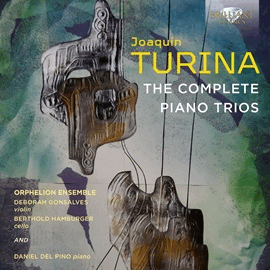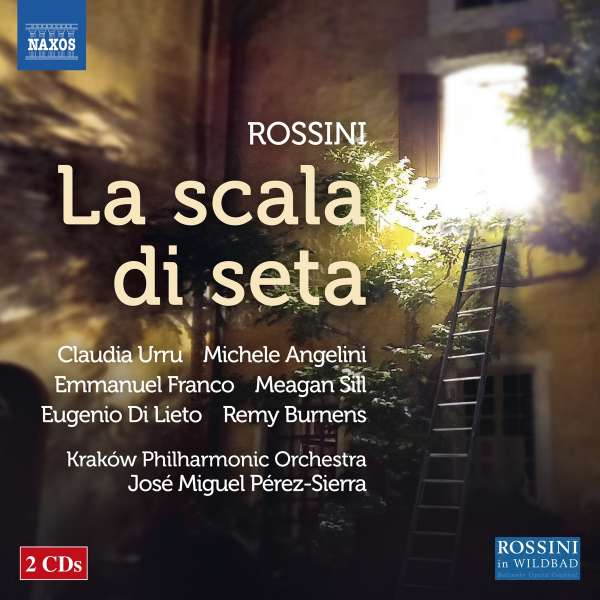Mit La Scala di Seta (Die seidene Leiter) erzielte der zwanzigjährige Gioacchino Rossini einen seiner ersten kommerziellen Erfolge. Die seidene Leiter des Titels wird von Dorvil benutzt, um zu seiner Frau Giulia zurückzukehren, mit der er heimlich verheiratet ist und die im Haus ihres Vormunds Dormont lebt. Doch dieser hat die Hand von Giulia seinem Freund Blansac versprochen hat, der in Wirklichkeit in Giulias Cousine Lucilla verliebt ist. Am Ende wird alles gut, aber eben ganz anders als es sich Dormont vorgestellt hatte.
Claudia Urru singt die Giulia mit einer angenehm timbrierten und agilen Stimme, die auch den Charakter der Figur gut trifft. Stimmlich wie darstellerisch ist dies eine exzellente Leistung.
Michele Angelini hat eine feste und sicher geführte Tenorstimme, die sich für Rossini wunderbar eignet. Sie ist beweglich genug um die erforderten Koloraturen problemlos zu bewältigen.
Remy Burnens kann den Intriganten Dormont gut darstellen, und ganz vorzüglich singt auch Emmanuel Franco in der Rolle des Dieners Germano.
Meagan Sill singt die Partie der Lucilla zur vollsten Zufriedenheit. Einzig Eugenio Di Lieto bleibt als Blansac etwas hinter den Leistung seiner Kollegen zurück.
José Miguel Pérez-Sierra sorgt mit den Musikern des Philharmonischen Orchesters Krakau für ein leichtes, warm gefärbtes Orchesterspiel. Pérez-Sierra weiß, wann er dem eleganten Charme und wann der Verve mehr Platz einräumen muss. Er stellt auch ein optimales Gleichgewicht zwischen dem Orchester und den Sängern her. Es ist dies also eine rundum gelungene Aufnahme einer Oper, von der vielen Musikfreunden nur die Ouvertüre bekannt ist.
Warum Naxos als Coverbild eine Holzleiter gewählt hat, ist unverständlich, aber letztlich keine Abwertung der Produktion.
With La Scala di Seta (The Silken Ladder), the twenty-year-old Gioacchino Rossini achieved one of his first commercial successes. The silken ladder of the title is used by Dorvil to return to his wife Giulia, to whom he is secretly married and who lives in the house of her guardian Dormont. But the latter has promised Giulia’s hand to his friend Blansac, who in reality is in love with Giulia’s cousin Lucilla. In the end everything turns out well, but quite differently than Dormont had imagined.
Claudia Urru sings Giulia with a pleasantly timbred and agile voice that also captures the character of the figure well. Vocally as well as in terms of acting, this is an excellent performance.
Michele Angelini has a firm and confident tenor voice that is wonderfully suited to Rossini. It is agile enough to handle the required coloratura with ease.
Remy Burns can portray the schemer Dormont well, and Emmanuel Franco sings quite exquisitely in the role of the servant Germano.
Meagan Sill sings the part of Lucilla to complete satisfaction. Only Eugenio Di Lieto as Blansac falls somewhat short of the performance of his colleagues.
José Miguel Pérez-Sierra and the musicians of the Krakow Philharmonic Orchestra provide light, warmly colored orchestral playing. Pérez-Sierra knows when to give more space to the elegant charm and when to sparkling verve. He also strikes an ideal balance between the orchestra and the singers. So this is an all-around successful recording of an opera of which many music lovers are only familiar with the overture.
Why Naxos chose a wooden ladder as the cover image of this album is incomprehensible, but ultimately not a devaluation of the production.


















